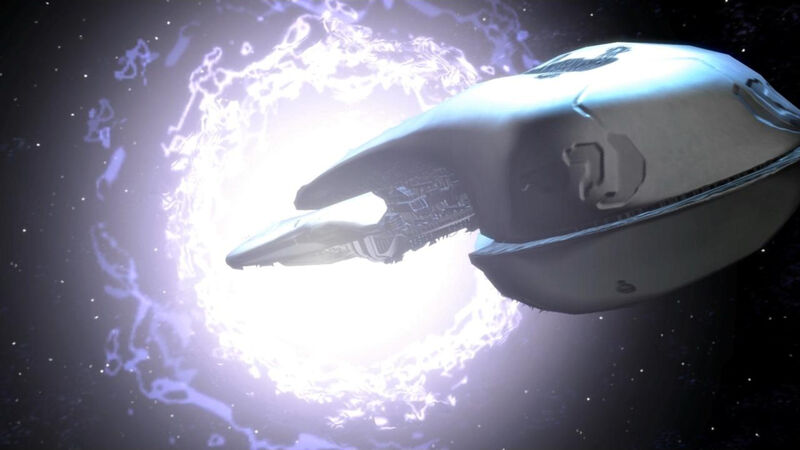MarkyMarkV
New member
My attempt at recreating some sort of slip-space jump from Halo, or any science fiction movie for that matter.

Earliest version of this render. Notice the change in particle size, color, and glow.

Almost identical to the next picture except a little less contrast, and no stars or black space.

Final Version of this render. Black space and stars in the background round out the effect of this slipspace rupture

And here's a reference from Halo 2.
I lit the ship w/ a sun lamp from below, 4 point lamps (above, below, right, and left) tinged pink, and a spotlight to create a sort of light-ray effect from behind. The particles are in a swirling pattern, emitted from the vertices of a circular plane, like so.

Considering this is only my second attempt using the compositor, and really the first time I've ever used particles with a purpose, the test was a success. The only thing I can think of to improve on this is to add a white spherical plane behind the particles and set it to glow in the compositor to fill out some of the empty space.
Critique appreciated.

Earliest version of this render. Notice the change in particle size, color, and glow.

Almost identical to the next picture except a little less contrast, and no stars or black space.

Final Version of this render. Black space and stars in the background round out the effect of this slipspace rupture

And here's a reference from Halo 2.
I lit the ship w/ a sun lamp from below, 4 point lamps (above, below, right, and left) tinged pink, and a spotlight to create a sort of light-ray effect from behind. The particles are in a swirling pattern, emitted from the vertices of a circular plane, like so.
Considering this is only my second attempt using the compositor, and really the first time I've ever used particles with a purpose, the test was a success. The only thing I can think of to improve on this is to add a white spherical plane behind the particles and set it to glow in the compositor to fill out some of the empty space.
Critique appreciated.
